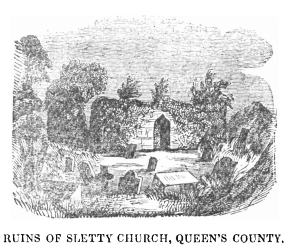BLESSED THADDEUS MAC CARTHY
THE high Alps, snow-covered, take on, at sunset in Autumn time, such colours and blends as are to be conveyed only in music, or stored in the secret heart. Pathos and longing in the deep blue auras, magic in the silver slides passing in and out of the lanterns of moon and stars, peace and rest in the purple flowing down like a shawl to cover the beloved breasts of hills; until in the dark from the folded world rise, like breathings of children, turnings in sleep, little sighs and cries, the springs and streams of the lower levels, un-frozen as yet and running on to the Mediterranean with word of the hills and how beautiful they are in their sleep, and how holy this work is of handmaiden to them. So poetry steals out of every thought, such poetry as must have touched his heart. For look at him there, a pilgrim dragging himself on to the Italian gate of the Alps. A young man, 37 or so, but broken in all things save of God. Night is falling as he reaches Ivrea and enters the cathedral. He prays for strength to persevere, for now his heart lifts with an agonising hope. There, up in the valley of Aosta, opens out the fan of snows about the great St. Bernard, from whose heights - oh, God, if only he can reach them! - the 19 hills will be visible rolling down to the West and Ireland that he craves for. So he is shaken and exalted by the thousand thoughts, the folly of his adventure, the anguish for home, the phantoms that begin to rise of kinsmen clustering round him at the gates of Cork. "Welcome, welcome back -" But look! How white he turns! The night grows harder with nipping cold, his blood congeals, his skin tingles and is stung, the nails of the coffin rivetting in - so his mind wandering begins to vision it. He staggers to a gate it is a mile beyond Ivrea on the Aosta Road - the hospice of St. Antonio - they admit him; another rover; pilgrims are frequent, not always to be trusted. He flounders to a bed in the common ward ; neglected, scorned maybe. Vespers ring out. The Brothers are at prayer; the pilgrim gives a little gasp on the floor. Suddenly the mountains topple down, the torrents run living gold, lapis lazuli and silver reef across the peaks, avalanches leap and clash like cymbals. An old feeble fellow stretched near by cries out for help: "That one there - the stranger! He is all on fire!" And the bell clangs the brethren round, and they fall upon their knees, breathless and humbled, till the phosphorescence passes from the face and hair of the departed. Oh, Mary and Joseph! a saint and of noble birth! For look what is here and they searching his coarse pilgrim clothes! A bishop's ring and the scrip from the Pope himself! And the poor man, so holy and good, and he walking and begging his way from Rome! Fling wide your gates, O Cork, and bid his spirit enter. For this Thaddeus of the royal MacCarthys is such a light of humility and faith as must outshine us all !
D. L. Kelleher, The Glamour of Cork, (Dublin and London, 1919), 18-20.Content Copyright © Omnium Sanctorum Hiberniae 2012-2022. All rights reserved.




